Gokh
A people that tend to keep to themselves. Hardy and devout, they live difficult lives in the harsh mountains of Nipinoul. Despite this they keep their chins to the sky— and the stars twinkling above.
The Gokh are tough, and stocky— adapted to life in the mountains, standing around 4'5" to 5'1". They possess tough pale-grey skin that can reach up to an inch thick in some areas, and is creased around joints such as their shoulders, hips, knees, and elbows to allow for easier movement— giving the appearance of a natural armor. Hair cannot easily pierce this thick skin, however— so their silvery white hair only grows on their heads, and beards form only along the middle of men's chins.
Their feet are half the length of the average human's, and split in the middle. A large portion of each of these halves is covered in a pointed yellow-white hoof. This— alongside a dewclaw at the back of their ankle, and tough, gripping skin along the backs of their feet— allows the Gokh to become naturally adept climbers, able to scale and master the terrain they were born in.
Their strong hands are slightly taller and wider than an average human's, giving them more area to grip with; their fingers, too, are slightly elongated so as to fit better into various cracks and crevices— with retractable claws at their ends to aid in gripping smoother surfaces. This is all covered— along the palm and bottom of the fingers— with an especially tough padding. The Gohks are few in number— due in part to the growing borders of their neighbors, and poaching alchemists from Louh. At least, they are only few in number as far as the outside world is aware. Though it is not unheard of for Gohk to live outside of their own secluded societies, there is but one fairly small settlement known to the world at large— Kohd.
Hundreds of years ago, the Gokh were slaves to a mad tyrant. An occultist had discovered the secrets of manipulative magic— and began cannibalizing many of her brethren. It was not long until she was able to control her home village with her sheer power. Soon after gaining control, she began to send warriors to neighboring villages— demanding tribute, lest she raze them herself. It took the complete annihilation of three villages before the rest fell in line.
These newfound subjects were forced to mine into the mountains, regardless of whether or not anything of worth lay inside— some dying from exhaustion of the toilsome, pointless work. Others were made to stamp out the struggling sprouts in their farms, or put out the warm fires in their homes. Worse yet, she forced families to fight one another to the death for her amusement. The madwoman would be the end of their people should she not stop. In a desperate attempt to save their people, some attempted to flee their traditional homeland in the dead of night.
They were found frozen to death the following morning.
All seemed lost for the Gokh— until a miracle happened. In a particularly cold winter night, a star peculiarly appeared to grow in the night sky over the village the tyrant had made her home. A small speck in the distance, free, happy, sparkling in the great beyond— as if mocking those suffering below it. It continued to grow, as large as one's fist, then an entire human being— even an entire house.
White became blue, and the snow reflected this brilliant coloration in response— almost welcoming the sudden change. As the object grew closer, the sky was set alight with lurid streaks of blue, green, and orange which blended together at their seams— it was as if the night had never fallen upon them.
The denizens of the village stared in awe at the sky, at the great rectangular object rapidly approaching them. Somehow, they felt no need to fear it— as if something reached into their minds and blocked the very thought of fear from them. Many even opened their arms to welcome the great meteor from above— even the tyrant. It mesmerized them, spiraling, brilliant colors in equally brilliant streaks swirling and growing as it grew closer and closer. As the meteor struck the ground, the village was destroyed completely along with the tyrant— leaving nothing but a crater in its wake. The meteor itself remained within the crater, a gargantuan monument to those that perished from its sudden descent.
A thunderous sound woke the denizens of the surrounding villages as the meteor landed— had the bright lights not done so already— and the earth beneath them shook. Parties were sent to discover the source of the disturbance, which, thanks to the meteor's massive size, took little time to find.
More died over the course of that winter, but as the remaining villages united their strengths, their people would ultimately survive for centuries to come. The site of the meteor became the source of a newfound strength— grondhan— and soon became the site of the Gokh tribes' allied capital, Grondhal. The meteor itself was named Grondh. Shortly after this, a new religion spread like wildfire through the survivors— a star-worshiping faith known as Kogoth.
Family is especially important to the Gokh, to the point where many coalesce into tight-nit clans containing even distant relatives.
Should a child be born without the stars gracing their arrival— their birth will never be recognized. They will never truly be connected to their family, and are nigh invisible to the stars above. These gothots, or invisibles are often cast out, or killed on the spot. For these infanticides, and cutting the umbilical cord, a ceremonial knife forged from grondhan is used as it is believed to show the child accepting the stars' gift. Parents will spend this first night alone with their newborns, but the clan will come together on the following night to celebrate with food, drink, and dance.
Following this, they may make one wish for their future. At the very end, as the sun begins to rise, the child will receive words of wisdom from within the meteorite. Some are taught an important lesson, others may hear secrets— and a select few hear of the future yet to come.
Men will grow out their hair in a similar fashion to their beards, while women tend to keep theirs short. Both men and women will take care in maintaining their hooves, polishing them, cleaning dirt from them, and filling cracks and chips with molten Grondhan, or mud.
Both are seen as equally capable warriors, and leaders— however, it is believed that leadership is better handled by a couple than any individual.
These walls dig into the ground, past the lowest floor— so that they are better kept in place. A fireplace will often sit in the center of a structure, the inner walls of which— if any— will stop a foot or two short of the ceiling so that it can warm the entirety of the the building.
Windows are cut from in such a way that allows the cut piece to be placed safely back over the hole. Doors are similarly made of stone, with round pegs which fit into the frame to allow them to turn inwards. Often, the outside walls are carved, typically around the doorframe and seams.
Fox pelts are used to create large hooded coats, and pants. Goat hide is more commonly used for boots, which are lined with alpaca fur. Gokh boots are more akin to anklets— as they only cover the tops of their feet, as their gripping pads and hoofs are essential for traversing the steep mountains they call home.
Many Gokh believe in the Kogoth faith, which teaches that their proximity to the stars— as they live atop mountains— has made them visible to them. The stars pity them and their plights, which is why they had been saved all those centuries ago. Should they do as the stars wish, and free themselves from their pity, they shall prosper.
And so, they wish to become like the stars, by creating terrestrial constellations of their own and shining as brightly as they can through honor and expressions of joy. One day, they believe, they too shall join the stars above— so long as they continue their pursuit.
Mountainous Alterations
Their feet are half the length of the average human's, and split in the middle. A large portion of each of these halves is covered in a pointed yellow-white hoof. This— alongside a dewclaw at the back of their ankle, and tough, gripping skin along the backs of their feet— allows the Gokh to become naturally adept climbers, able to scale and master the terrain they were born in.
Their strong hands are slightly taller and wider than an average human's, giving them more area to grip with; their fingers, too, are slightly elongated so as to fit better into various cracks and crevices— with retractable claws at their ends to aid in gripping smoother surfaces. This is all covered— along the palm and bottom of the fingers— with an especially tough padding. The Gohks are few in number— due in part to the growing borders of their neighbors, and poaching alchemists from Louh. At least, they are only few in number as far as the outside world is aware. Though it is not unheard of for Gohk to live outside of their own secluded societies, there is but one fairly small settlement known to the world at large— Kohd.
A Gift From the Heavens
These newfound subjects were forced to mine into the mountains, regardless of whether or not anything of worth lay inside— some dying from exhaustion of the toilsome, pointless work. Others were made to stamp out the struggling sprouts in their farms, or put out the warm fires in their homes. Worse yet, she forced families to fight one another to the death for her amusement. The madwoman would be the end of their people should she not stop. In a desperate attempt to save their people, some attempted to flee their traditional homeland in the dead of night.
They were found frozen to death the following morning.
All seemed lost for the Gokh— until a miracle happened. In a particularly cold winter night, a star peculiarly appeared to grow in the night sky over the village the tyrant had made her home. A small speck in the distance, free, happy, sparkling in the great beyond— as if mocking those suffering below it. It continued to grow, as large as one's fist, then an entire human being— even an entire house.
White became blue, and the snow reflected this brilliant coloration in response— almost welcoming the sudden change. As the object grew closer, the sky was set alight with lurid streaks of blue, green, and orange which blended together at their seams— it was as if the night had never fallen upon them.
The denizens of the village stared in awe at the sky, at the great rectangular object rapidly approaching them. Somehow, they felt no need to fear it— as if something reached into their minds and blocked the very thought of fear from them. Many even opened their arms to welcome the great meteor from above— even the tyrant. It mesmerized them, spiraling, brilliant colors in equally brilliant streaks swirling and growing as it grew closer and closer. As the meteor struck the ground, the village was destroyed completely along with the tyrant— leaving nothing but a crater in its wake. The meteor itself remained within the crater, a gargantuan monument to those that perished from its sudden descent.
A thunderous sound woke the denizens of the surrounding villages as the meteor landed— had the bright lights not done so already— and the earth beneath them shook. Parties were sent to discover the source of the disturbance, which, thanks to the meteor's massive size, took little time to find.
The stars have heard our pleas, and we are spared!
At last, we are spared!
More died over the course of that winter, but as the remaining villages united their strengths, their people would ultimately survive for centuries to come. The site of the meteor became the source of a newfound strength— grondhan— and soon became the site of the Gokh tribes' allied capital, Grondhal. The meteor itself was named Grondh. Shortly after this, a new religion spread like wildfire through the survivors— a star-worshiping faith known as Kogoth.
Traditions
As the stars shine together in great constellations, we, too, shall be constellations of flesh and blood.
Greetings & Farewells
Family and close friends are greeted and seen off with warm embraces. Strangers and acquaintances are greeted and seen away with a mutual shake of the forearm.Milestones
Birth
Everything will be done to ensure that a child is born at night, so that the stars above may greet them into the world. Rituals are performed, chants uttered, and if needed— herbs believed to delay birth are ingested by the mother. In some particularly desperate cases, the child may be pushed back in or held in place until nightfall. This typically leads to the child's death, or injures the mother permanently— but it is preferable to the alternative.Should a child be born without the stars gracing their arrival— their birth will never be recognized. They will never truly be connected to their family, and are nigh invisible to the stars above. These gothots, or invisibles are often cast out, or killed on the spot. For these infanticides, and cutting the umbilical cord, a ceremonial knife forged from grondhan is used as it is believed to show the child accepting the stars' gift. Parents will spend this first night alone with their newborns, but the clan will come together on the following night to celebrate with food, drink, and dance.
Coming of age
Upon reaching the age of ten, Gokh children will be taken to the capital of Grondhal. Here, they are led to Grondhat— a great church carved into the great meteorite— and into a quiet unfurnished room within. Surrounded by the meteorite, the stars' gift, the child is to chant its praises, and thank it for all they can.Following this, they may make one wish for their future. At the very end, as the sun begins to rise, the child will receive words of wisdom from within the meteorite. Some are taught an important lesson, others may hear secrets— and a select few hear of the future yet to come.
A new tyrant awakens...a mad occultist, like that who had plagued our people so long ago! They are thankfully not one among us— all I know is that they are a foreign alchemist soon to be born.
Death
Deaths are solemn affairs, without celebration. Clans will come together to praise the dead, recounting their deeds and skills within life— purposefully glossing over their mistakes and flaws. The corpse's eyes are then covered with molten Grondhan, and placed sitting up within their clan's burial cairn. Cairns are constructed from interlocking stone bricks into cylindrical chambers, with small windows so that the dead may still see the stars. Clans will dutifully keep snow, insects, and small animals from the interiors.Eating
One must hold up their plate, bowl, or cup to the sky before eating— as a way of thanking the stars for the meal.War
Approaching warriors will yodel towards their opponents, asking either for them to stand down, run away— or simply warning them of their approach in order to strike fear into their hearts. Gokh warriors believe that they must fight honorably, for the stars are always watching. Opponents are killed as swiftly and mercifully as possible, as a result, bludgeoning weapons such as hammers and clubs are rarely seen in Gokh hands. If an opponent is found without a weapon, a warrior will produce an extra dagger they carry on their person for their use.Ideals, Love & Gender
Relationships
One cannot marry another without their clan's approval first. As such, a series of trials must be completed by the aspiring partner— after being accepted by the one they wish to join, of course. These trials vary wildly from clan to clan, but there are a few commonplace trials such as hunting a certain number of foxes or managing to kill a fearsome dondregh— or some other monster.Beauty
Men take great pride in their beards, seldom shaving them. A beard's length can often be seen as an indication of one's age, and therefore wisdom. However, a matted beard is simply unforgivable. Some will spend hours brushing and cleaning them. Jewelry, in the form of metal or earthen rings, is often hung at the bottom— in order to straighten out the hair and make it harder to curl.Men will grow out their hair in a similar fashion to their beards, while women tend to keep theirs short. Both men and women will take care in maintaining their hooves, polishing them, cleaning dirt from them, and filling cracks and chips with molten Grondhan, or mud.
Gender
Women are seen as creators, as they create life. They are expected to build homes, monuments, and other structures. Gokh artists are primarily women, and as such most smiths are also women. Farming and cooking are also commonly left to them. On the religious side, they are the ones who will create talismans and totems— as well as ceremonial structures.
Men are seen as communicators, and are expected to deal with diplomacy and trade. They are expected to travel more frequently for both of these, to other clans and tribes— those who leave beyond the mountains are primarily men. Child rearing is also left mostly to men. In their faith, men are those who handle chanting and communion with the stars.
Art, Architecture, & Dress
Art
Mediums most popular for the Gokh are weaving (primarily carpets and blankets), and stone carving. Both mediums depict primarily geometric patterns, which represent stars and constellations. Other works depict families working or resting with one another. Carvings are most often done in square or rectangular slabs of stone, around the height of a single Gokh, on average. Carpets and blankets typically only have up to three colors, the exact colors usually depend on the clan that made them.Architecture
Gokh structures are constructed halfway into the ground, in the interest of retaining heat. They are most commonly made of series of interlocking stone slabs, with angled walls. A collection of hides are placed over the topmost point where each wall meets, to ensure that snow cannot enter— and heat cannot escape. Mud is packed for extra protection on the inside of these seams.These walls dig into the ground, past the lowest floor— so that they are better kept in place. A fireplace will often sit in the center of a structure, the inner walls of which— if any— will stop a foot or two short of the ceiling so that it can warm the entirety of the the building.
Windows are cut from in such a way that allows the cut piece to be placed safely back over the hole. Doors are similarly made of stone, with round pegs which fit into the frame to allow them to turn inwards. Often, the outside walls are carved, typically around the doorframe and seams.
Dress
Possessing little to no hair over their bodies, the Gokh need other means to stay warm. As such, most of their clothing comes from various animal hides. Alpacas are commonly reared, their fleece taken and spun into cloth for warm, soft ponchos worn indoors, and as the first layer when outside.Fox pelts are used to create large hooded coats, and pants. Goat hide is more commonly used for boots, which are lined with alpaca fur. Gokh boots are more akin to anklets— as they only cover the tops of their feet, as their gripping pads and hoofs are essential for traversing the steep mountains they call home.
Religion & Myth
And so, they wish to become like the stars, by creating terrestrial constellations of their own and shining as brightly as they can through honor and expressions of joy. One day, they believe, they too shall join the stars above— so long as they continue their pursuit.
Goh-k
Related Organizations
Naming
Gokh are named after stars, which were supposedly named by the meteor itself. The first one to three stars a child lays their eyes upon are used for this. Following this name is their clan constellation. Masculine first names include: Thog, Kogo, Drodok, Bo, Dokret Feminine first names include: Doth, Gotogh, Bathegh, Thogh, KotothTaboos
Do not sneeze at the stars— this is extremely insulting to them. Do not step on another's hoof— this is practically asking for a fight. Do not block the night sky from another— this is cruel.Reading the cosmos
Rare among the Gokh are Ghod Dath— or Star Readers. Star Readers are chosen by the meteorite, and marked with a perfectly spherical indent 3-4" in their foreheads. In the right light, it is said that one can just barely notice a pale green orb sticking out from this indent. Most importantly is their ability to read the stars— and pass on their words to others. The stars do not speak to them, but write to them.Rejoice, brothers and sisters. Rejoice! The stars wish that we smile as they do on this day— for a new star has been born among them!Constellations, twinkling, and even their speed can all be read as different sounds, words, and phrases— but this is imperceptible to anyone but the Star Readers, who beyond possessing the sudden knowledge of this language, are able to stare, unblinking, at the night sky for hours on end. Star Readers, almost as if paying for their power, lose the ability to walk— and must be carried by individuals chosen by their clan. Regardless, their word is well respected, and has saved the Gokh from disaster on numerous occasions.
Predicting the future
Some, during their communion with Grondh, receive knowledge of the future. This knowledge can, and has, saved many entire villages from disaster. One such case was that of the Dhag Dod or the great shake— a powerful earthquake which shook the continent of Rqet around one hundred years ago. A young girl frantically went about warning each and every village they could— running away from home to do so. She had been told by the great meteor that the ground beneath would move violently in three nights— destroying her village and others in the process. As this was not the first time such a strange claim had occurred, many warned that their villages would either be buried or collapse with the stone they were built upon took heed of these words, and saved what they could— though a stubborn few remained behind. True to the meteor's words— an earthquake hit soon after, sending terrible avalanches down the mountains which buried some villages and tore out others.Though the ground shaking is a mere vibration from the perspective of the stars, they can still see that it is of great danger to us. Is there nothing that escapes their understanding?
Dance of the stars
A popular couple's dance, inspired by the movements of the stars above. Do refers to the first dancer, and Da refers to the second. Both Do and Da stand a few feet apart, making a few rapid steps forward, then back— like stars twinkling. This repeats five times. Do pulls Da close, placing their hand over their lower back. Da does the same, and the two join their free hands in the air. Do takes a slow step to the left, prompting Da to follow. Three more steps are taken, with the pair then twirling so that Do stands where Da stood previously, and vice versa. This repeats a number of times, as the pair slowly traces a circle on the floor— and largely depends on the size of the circle. This is akin to the stars slowly turning above. Da then frees themselves of Do, and repeats the "twinkling" motion three times before returning to their embrace. Do does the same, and the two do one final spin— ending the dance.Related articles
Remove these ads. Join the Worldbuilders Guild


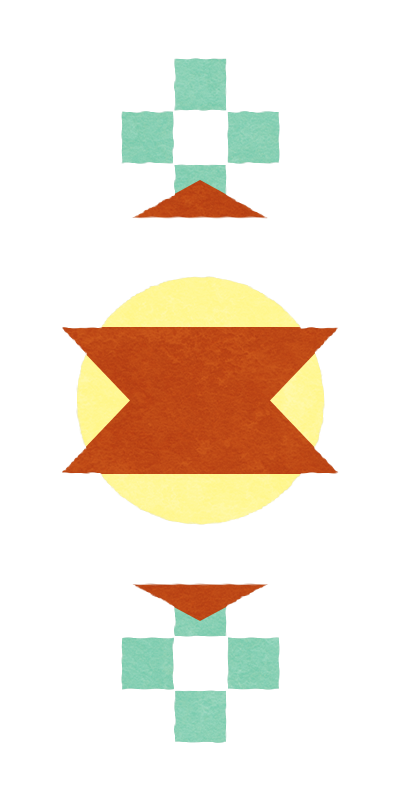
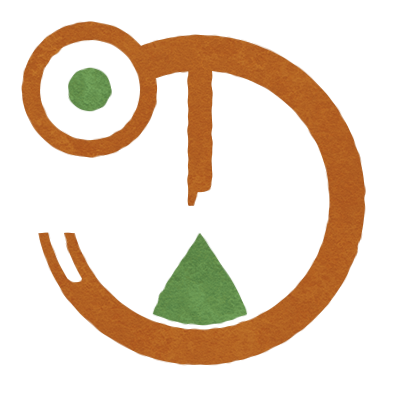
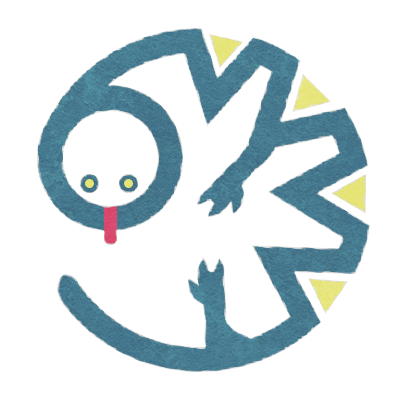
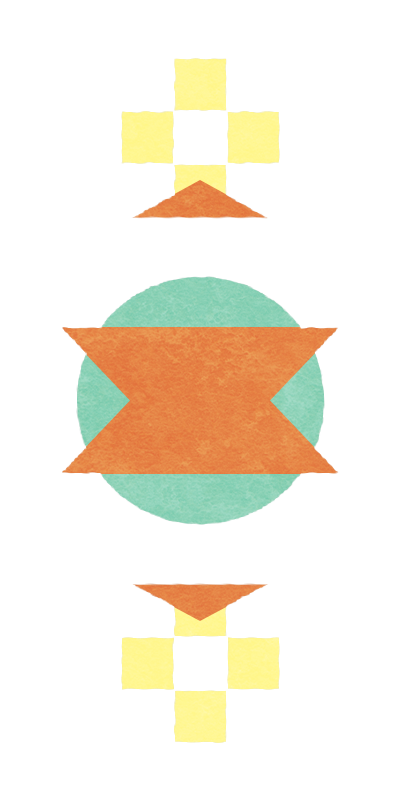
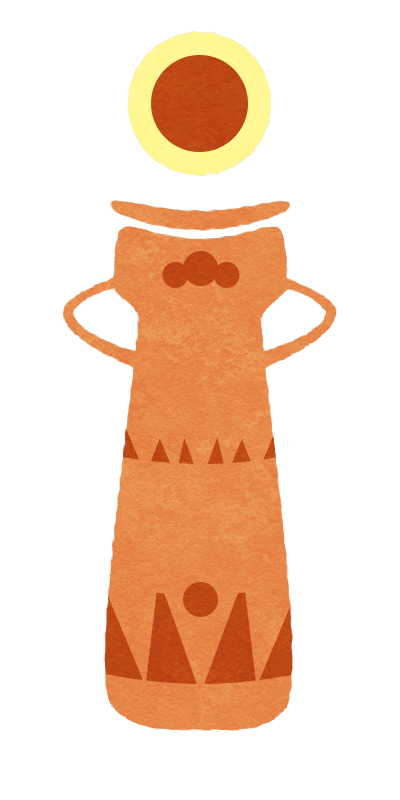



Comments
Author's Notes
Feedback is very much welcome! Whether on the content, or the formatting! Please, point out typos if you spot any!